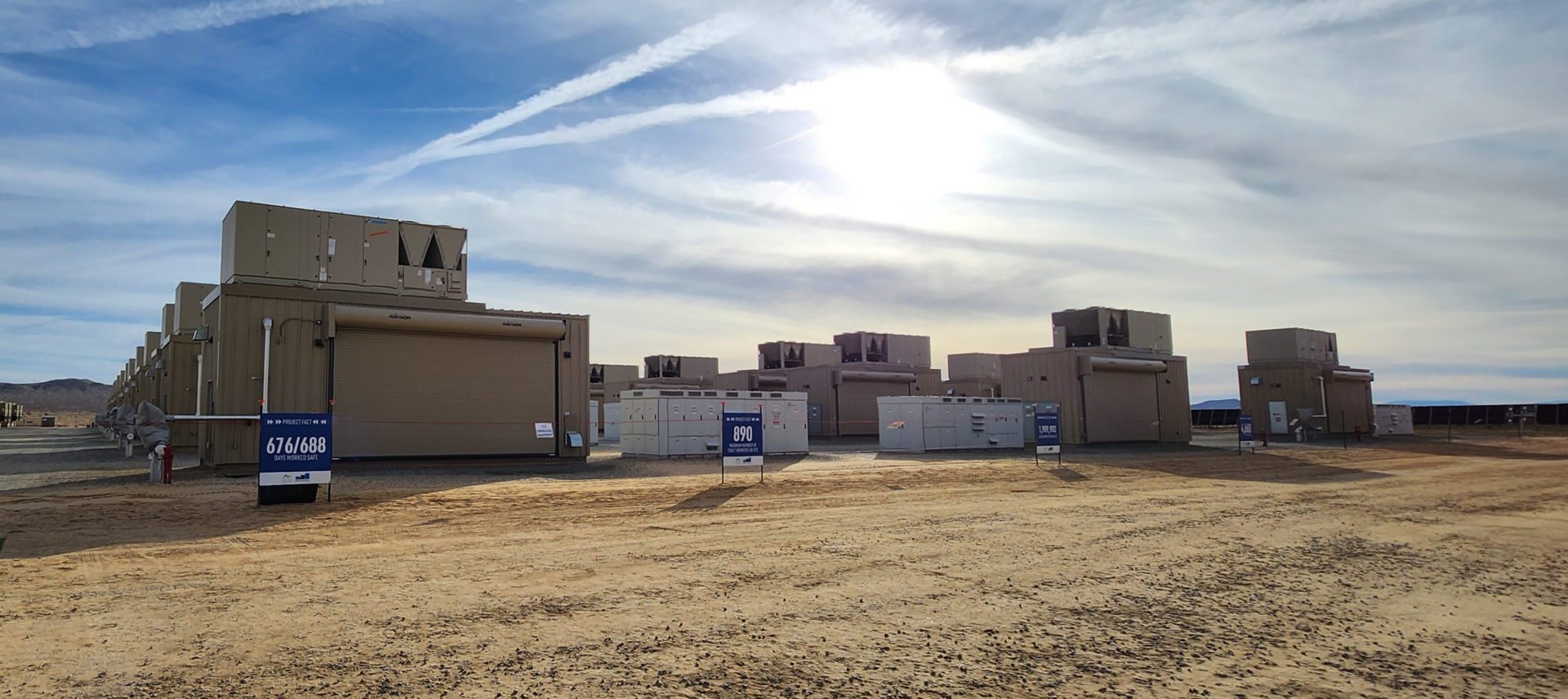News & Insights
Energy for military installations: 4 strategies for enhancing resilience
Salas O’Brien is serving military clients helping them achieve resilience and maintain critical power through strategic initiatives.

The Department of Defense (DoD) faces multiple energy resilience vulnerabilities, posing risks to its ability to perform missions. As technology has advanced, DoD’s critical energy load has grown, exacerbating the need to ensure energy is available when and where they need it.
This article explores the factors driving the pressure on energy resilience and shares strategies to improve installation energy resilience.
What is driving the challenges to energy resilience?
Three key factors are converging to make energy resilience on military bases a top focus.
Aging infrastructure. Military bases and their public and private power utility providers face failing infrastructure. Most utility infrastructure is over 50 years old, operating well beyond its intended lifecycle. Worsening the situation, maintenance has been regularly deferred due to budget constraints.
Extreme climate events. The DoD Climate Risk Analysis (Oct 2021) identifies climate change as a significant security threat. This threat extends to energy supplies: frequent extreme weather events, including hurricanes, fires, rising temperatures, and changing precipitation patterns, are causing increasing blackouts and brownouts to military installations.
Physical and cyber-attacks. More than ever before, military bases are targets of both physical and cyber-attacks, both of which can impact power supply and distribution systems. Bolstering both robustness and redundancy will protect and diversify against threats targeting DoD energy.
Strategies to enhance energy resilience for military bases
1. Energy Planning
The military enhances installation energy resilience by identifying critical energy requirements, assessing energy vulnerabilities, and addressing mission-critical energy resilience gaps.
Salas O’Brien’s energy professionals assist our clients by supporting Installation energy & water plans (IEWP); critical load environments; load-encompassing, alternative energy production and/or procurement; diversity distribution paths; and improved efficiency, redundancy, and storage. Building resilience requires minimizing risks such as single points of failure. It also includes conservation—after all, the most resilient energy is that which you don’t need.
2. Microgrid Solutions
Microgrids are self-sufficient energy systems that serve a discrete energy load profile within a geographic footprint.
When commercial grids struggle under peak loads or fail during extreme weather events, everyone connected is affected. But microgrids can run “grid connected” or in “island-mode” with the ability to disconnect and maintain power supply to critical facilities during an outage.
Not only do microgrids provide resilience against events that impact commercial grids, but their contained footprints often make them simpler to secure. Microgrids incorporate distributed energy resources (DERs) such as battery energy storage system (BESS) that can deliver power for weeks to independently sustain mission-critical facilities. Renewable energy can enhance energy resilience by providing diverse onsite energy generation options, especially when paired with storage.
3. Renewable Energy
Renewable energy sources play a crucial role to the Department of Defense in meeting the carbon-neutral energy requirements mandated by Executive Order (EO) 14057. When coupled with energy storage, they can provide secure and uninterrupted power. Salas O’Brien guides our DoD clients to facilitate the transition to carbon-free and secure electrons. At Edwards Air Force Base in California, we acted as the federal government’s representative to negotiate the enhanced use lease (EUL) and construct the largest solar array in North America. We are also supporting the acquisition of the 450-megawatt photovoltaic and 900-mW battery energy storage systems, ensuring timely system installation to support the Air Force.
At Naval Air Station Oceana in Virginia, we are facilitating the terrestrial landing for a large offshore wind farm, utilizing Navy property to provide the most efficient route for power lines to onshore substations. As a potential in-kind consideration, the Navy may receive energy security through infrastructure modernization to enhance energy resilience.
Geo-exchange, also known as geothermal, is a renewable heat source that utilizes the ground for heating in winter and cooling in summer. These systems operate with up to 70% greater efficiency than traditional systems, leading to significant operational cost savings and carbon emissions reductions. For military use, geo-exchange is desirable as it provides a continuous, renewable source of energy that is not subject to the intermittent production gaps seen in solar and wind energy generation. Additionally, these systems have a small footprint and are easy to secure, making them suitable for locating close to highly protected assets without impacting airfields.
Salas O’Brien has played a significant role in supporting the development of renewable energy solutions, including the design of over
4. Conservation
Salas O’Brien works with our clients to achieve energy resilience through conservation. We understand that energy efficiency is crucial for the success of organizations, especially for our clients with campuses, whether corporate, educational, municipal, or federal. That’s why we offer various energy management services, including audits, re-audits, commissioning, retro-commissioning, and re-commissioning.
Our team of experts works tirelessly to identify and implement energy conservation measures that lead to significant cost savings for our clients. We focus on improving lighting, HVAC, building envelope, and water systems, among other areas. Our comprehensive assessments provide project recommendations and cost estimates, ensuring our clients can decide on their energy management strategies.
We also understand that maintenance is an essential component of energy conservation. That’s why we offer our clients with campus upgrades to their electrical and mechanical systems that result in significant savings. We have designed over 200 central plant modernizations and recapitalization projects, providing our clients with the latest energy-efficient technologies.
At Salas O’Brien, we work closely with installation energy managers, planners, and public works leadership on military installations to develop efficiency improvement projects and identify available funding streams. Our team of experts is trained in certified energy management language and guidance, ensuring that we provide our clients with the most up-to-date information and solutions.
How Salas O’Brien became a leader in energy resilience
Salas O’Brien was founded in 1975 for the purpose of providing better energy solutions. For energy projects, creating funding solutions is as important as addressing the technical complexities. Salas O’Brien has unique expertise and a proven track record employing several currently authorized procurement tools, including alternatives to Federal Acquisition Regulation (FAR) acquisitions, as well as identifying and coordinating innovative funding sources. We also help DoD develop both FAR- and non-FAR-based financing options, as well as develop alternative financing solutions. We have deep expertise in executing a variety of projects, including Energy Resilience Conservation Investment Program projects, EULs, Intergovernmental Support Agreements, and other public-private partnerships.
We have a deep bench of experts and extensive experience in microgrids, the design and implementation of renewable energy technologies, and conservation projects. Our technical expertise combined with rich experience make us uniquely qualified to team with DoD clients and provide high-quality energy solutions to the military.
Curious how we can help you? Contact us.
For media inquiries on this article, reach out to Stacy Lake.

Hillary Bassett
Hillary Bassett has more than 20 years of experience with Air Force policy and infrastructure-related projects. She has been responsible for critical projects at the highest levels of the DoD, including for the Assistant Secretary of the Air Force for Energy, Installations and Environment (SAF/IE), directly supporting energy and real estate projects across a $1 billion portfolio. Hillary Bassett serves as a Principal at Salas O’Brien. You can reach her at [email protected].

Patrick Giardina, MBA, CEM, PMP
With over 25 years of experience in finance, acquisition, and development of complex and high-value projects, Patrick Giardina has proven effective at delivering innovative and sustainable solutions for public and private clients, focusing on renewable and resilient power generation. Patrick has led or managed multiple Public Private Partnership (P3) programs that involved feasibility studies, real property transactions, environmental regulations, partnership agreements, and financing mechanisms creating value for both the government and the private sector. Patrick serves as Senior Vice President of Energy and Infrastructure at Salas O’Brien. [email protected]